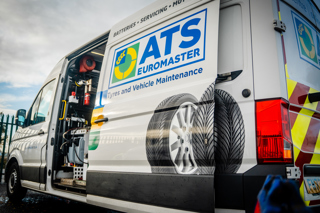An online tool that enables fleet operators to analyse the real world ‘burn rate’ of components has been launched by Derwent Management Services (DMS).
The DMS system utilises component replacement data gathered from the contract hire and leasing industry compiled across more than 300,000 company cars and vans and some 4.3 million ‘incidents’ of part replacement ranging from brake linings (brake shoe or pad) to engine replacement.
Both sets of figures are anticipated to increase over the coming months enabling system users to build up an even greater in-depth picture of the reliability of vehicles at 5,000-mile intervals across a range of 63 components from air conditioning (service and re gas) to wiper blade replacement.
The system enables users to obtain analysis based on car and van mileage of the real world replacement rate of individual components by make and model by comparing the industry average with their own data set across a given basket of vehicles.
The technology also enables users to drill down into the data to analyse average component costs and obtain a service and maintenance history of individual models across their fleet operational life.
Utilising the leading automotive industry data provider’s new SMR BurnRate system enables fleet managers to compile company car choice lists by taking into account the real world frequency replacement rate of vehicle components
DMS business development manager Andy Smith said: “When manufacturers launch a vehicle they provide SMR (service maintenance and repair) data on about 16 key items.
“However, that is a long way short of the number of vehicle components that may need replacing during the fleet life cycle of cars and vans.
“The SMR BurnRate system details all the key parts that may need replacing during a vehicle’s fleet life with contract hire and leasing companies electronically supplying vehicle component invoicing data.
“DMS updates SMR BurnRate quarterly to give fleets, contract hire and leasing companies and motor manufacturers the most accurate real world operating view of component, and therefore vehicle, reliability.”
Smith continued: “Critically fleet managers can accurately calculate using in depth industry data how many times each vehicle part is likely to need replacing over a specific operating cycle.
“They can then, on a model-for-model basis, compile their own vehicle choice list by selecting cars and vans with the lowest component burn rate.
“Component expenditure can also be factored in to the equation. If you can reduce the number of component replacements then you will go a long way in controlling the cost.”
SMR BurnRate highlights, for example, that among the top 10 best-selling cars in the UK last year, the Volkswagen Golf has the lowest component replacement factor based on a basket of most frequently required items at 60,000 miles. The Golf is followed by the Vauxhall Astra and the Nissan Qashqai.
Top10 best-selling cars in 2012
1. Ford Fiesta
2. Vauxhall Corsa
3. Ford Focus
4. Vauxhall Astra
5. Volkswagen Golf
6. Nissan Qashqai
7. BMW 3 Series
8. Volkswagen Polo
9. Mercedes-Benz C-Class
10. BMW 1 Series
Top 10 best-selling cars based on SMR BurnRate
1. Volkswagen Golf
2. Vauxhall Astra
3. Nissan Qashqai
4. BMW 3 Series
5. BMW 1 Series
6. Volkswagen Polo
7. Vauxhall Corsa
8. Ford Focus
9. Mercedes-Benz C-Class
10. Ford Fiesta
Smith added: “A number of contract hire and leasing companies are already using the new system and providing detailed vehicle incident data and we anticipate that this number will grow over the coming months and that this information will then be used to assist customers with vehicle choice list options.
“We are also in discussion with many motor manufacturers who can see the benefits to them of using the data, and we expect SMR BurnRate to be essential use for fleet operators as they look to cut vehicle operating costs.”
Smith concluded: “The company car and van maintenance records linked to component replacement on SMR BurnRate build from the day a vehicle joins a leasing company fleet to the day it is defleeted to provide the most complete real world record of vehicle reliability that can generate savings in vehicle and fleet operating costs.”




















Login to comment
Comments
No comments have been made yet.